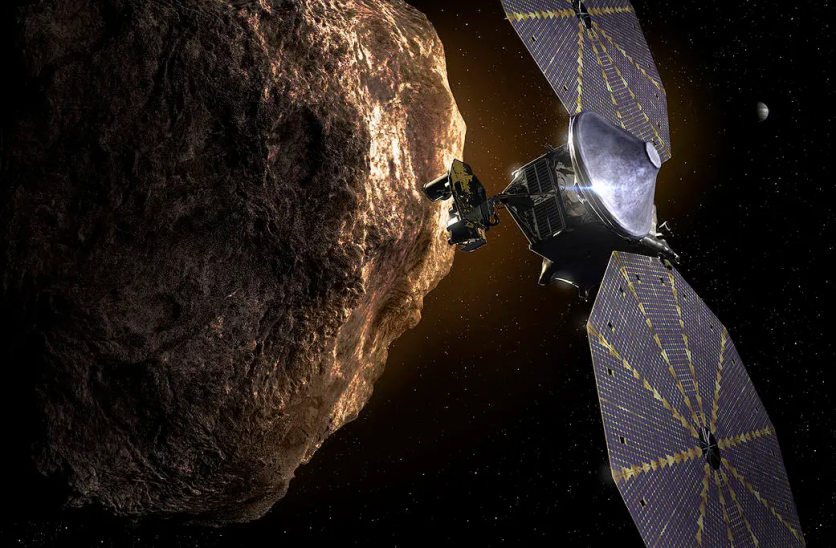NASA's Lucy spacecraft is on the verge of a historic meet-up with the asteroid Dinkinesh, marking a crucial milestone in its 12-year odyssey of exploration.
Since its first sighting of Dinkinesh on September 3, Lucy has journeyed an impressive 33 million miles (54 million km). It currently stands at a distance of 4.7 million miles (7.6 million km) from this small celestial body.
Nevertheless, as Dinkinesh continues its orbit around the sun, Lucy still has approximately 16 million miles (25 million km) to traverse before their encounter on November 1.

NASA's Lucy Spacecraft Targets Asteroid Dinkinesh
Over the past month, the spacecraft's team has observed the target asteroid steadily brightening as Lucy draws nearer. Additionally, they've detected a subtle variation in brightness, aligning with the previously recorded 52.7-hour rotation period.
Leveraging images captured by Lucy's high-resolution camera, L'LORRI, the team has refined their understanding of the relative positions of the spacecraft and asteroid, strategically guiding Lucy toward the impending rendezvous.
On September 29, a minute trajectory correction maneuver was executed, resulting in a minor adjustment of the spacecraft's speed by a mere six cm/s (approximately 0.1 mph).
This calculated nudge is anticipated to set the spacecraft on a trajectory that will bring it within 265 miles (425 km) of the asteroid. In late October, there will be another opportunity for trajectory adjustments if deemed necessary.
On October 6, the spacecraft transited behind the sun from Earth's vantage point, initiating a scheduled period of communication blackout. Despite this, Lucy has continued to capture images of the asteroid, which will be transmitted to Earth after communication is reestablished following the conclusion of the solar conjunction period in mid-October.
The principal investigator of the Lucy mission, Hal Levison, operates from the Boulder, Colorado, branch of the Southwest Research Institute, headquartered in San Antonio, Texas.
NASA's Goddard Space Flight Center in Greenbelt, Maryland, assumes responsibility for mission management, systems engineering, and safety and mission assurance.
Additionally, the spacecraft was constructed by Lockheed Martin Space in Littleton, Colorado. Lucy stands as the 13th mission in NASA's Discovery Program, which is managed by NASA's Marshall Space Flight Center in Huntsville, Alabama, under the aegis of the Science Mission Directorate at NASA Headquarters in Washington.
Inaugural Images From NASA's Lucy
Last month, Lucy transmitted its inaugural images of the main belt asteroid Dinkinesh, marking a significant achievement in its 12-year quest for knowledge.
Captured from a distance of 14 million miles (23 million km) on September 2 and 5, these images provide an initial glimpse of the approximately half-mile wide (1 km) Dinkinesh.
Over the next two months, Lucy will continue its approach, culminating in a close encounter of 265 miles (425 km) on November 1. During this phase, intensive tests will be conducted on the spacecraft's systems and procedures, particularly the terminal tracking system.
As part of its optical navigation program, Lucy will persist in imaging the asteroid, relying on its apparent position against the stellar backdrop to precisely determine the relative positions of Lucy and Dinkinesh.
However, NASA emphasizes that it won't be until the day of the encounter that Dinkinesh will reveal surface details, remaining a pinpoint of light throughout the extended approach.
Related Article : NASA Plans to Deflect Asteroid Bennu, Colossal Size Similar to Empire State Building

ⓒ 2025 TECHTIMES.com All rights reserved. Do not reproduce without permission.




